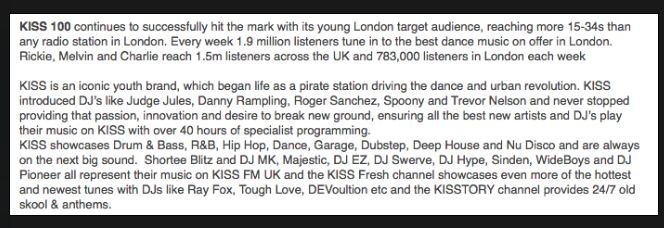I will be reaching out to my audience by using social media sites such as; Facebook, Twitter, My own website of my movie and P&A (film posters).
Who is my target audience:
1. Who is my primary target audience? Male and Females 18-45, who love getting chills down their arms while watching thriller films, psychological films and TV crime drama.
2. What makes my film stand out from the competition? Unlike most films about a child kidnapped, my film focusing on the child's point of view and her struggle to escape. Rather than focusing on the parents trying to find their child.
3. Why should my audience watch my film? As our film is unique, unlike any film before as it focus on both the kidnapped and the kidnappers journey.
Audiences can be segmented and defined by their GEARS
Gender
Ethnicity
Age
Region / nationality
Socio-economic group
My research shows that all products (including mass media products such as print magazines) have clearly segmented and distinct audiences based on gender, age and socio-economic group. These examples show this (source Bauer Media Advertising) :
I looked at the radio station kiss as it is good at identify its target audience, along with NME magazine who made a reader profile.
Maslowe's Hierarchy of Needs
Shows how audience have different levels of needs, the needs at the top (such as media driven needs) can only be met when the needs in lower levels (such as food, water) have be met.
Another model of audience behaviour is the media effects model:
- sees the audience as passively led
- influenced and manipulated by everything around them as they are gullible and impressionable.
The model shows how audiences have a variety of needs. Blumler and Katz deciding these needs were:
- entertainment / escapism / distraction
- seeking information (somethings called surveillance)
- personal identity (to support out world view)
- and social relationships (both on-screen and off)
The two-step flow model of audience behaviour:
Paul Lazarsfeld, Bernard Berelson and Hazel Gaudet analysed the voters' decision-making processed during a 1940 presidential election campaign and published their results in a paper called The People's Choice.
They thought that the information does not flow directly from the text into the minds of its audience unmediated but is filtered through "opinion leaders" who then communicate it to their less active associates, over whom they have influence.
The audience
then The audience then mediate the information received directly from the
media with the ideas and thoughts expressed by the opinion leaders, thus being
influenced not by a direct process, but by a two step flow. This diminished
the power of the media in the eyes of researchers, and caused them to conclude
that social factors were also important in the way in which audiences
interpreted texts. This is sometimes referred to as the limited effects
paradigm. (Source mediaknowall.com)
Socio-Economic Bands










You have researched audience profiling and audience behaviours.
ReplyDeleteAs suggested in class, place the 'Who is my target audience' intro above the work on your target audience profile in the evaluation question (no need to remove it from here).
ReplyDelete